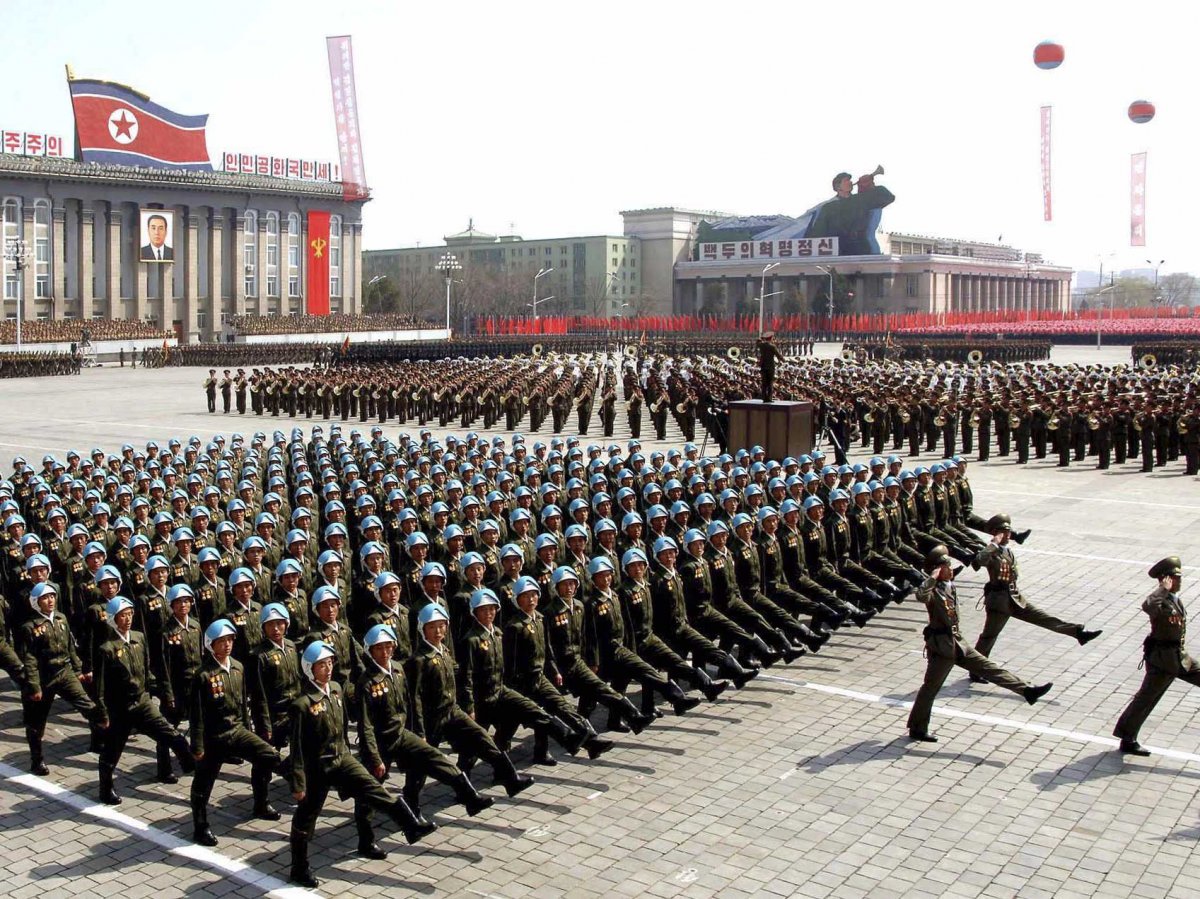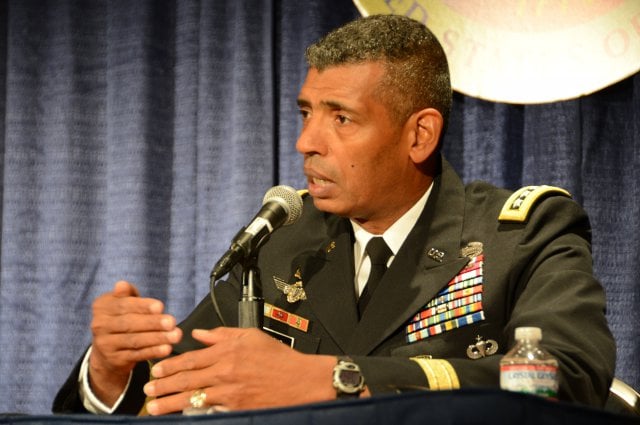
North Korea is “moving in the wrong direction” with its escalating approach to crisis on the peninsula and in the region while voicing threats of nuclear attack on the United States and its allies and partners, the Army four-star general nominated to take command of U.S. forces in Korea told the Senate Armed Services Committee on Tuesday.
Gen. Vincent Brooks, currently the senior Army officer in the Pacific, said in his opening statement that U.S., Republic of Korea and allied forces had to be “ready to fight tonight.” He added that he was “under no illusions” about North Korea, a nation that has moved to miniaturize its nuclear weapons, improve its ballistic missiles’ range and accuracy, test submarine-launched ballistic missiles and employ its cyber capabilities, all while maintaining the fourth largest military in the world.
Later, he cited Pyongyang’s placement of most of its 116,000 pieces of artillery close to the Demilitarized Zone to stress his point of the need for immediate readiness. “The amount of warning time is very short.”
Noting the recently completed Foal Eagle exercise, involving 300,000 South Korean and American forces, which drew sharp criticism from Pyongyang, Brooks said, “If we want to fight tonight, we have to practice.”
“We need to take [North Korean leader Kim Jong Un’s] actions seriously” in continued testing of nuclear weapons and missiles and increasing provocations.

On cyber threats, Brooks said the North Koreans “are among the best in the world” and have shown their willingness to use that domain when it chooses, as it did against Sony Entertainment some years ago to show its displeasure over a film depiction of Kim.
Said Brooks: “The [American] forces that are [in South Korea] are kept in high readiness,” but he expressed concern over “the shallowing of the depth” of follow-on forces—which could worsen if sequestration returned or the Army’s end-strength was cut below announced levels. He said the current rotational plan for forces was sound. Like the current commander, Brooks said forces in Korea could use more intelligence, surveillance and reconnaissance assets and missile-defense systems.
While the Patriot missile-defense system is already in place, negotiations are continuing between the United States and South Korea on possibly deploying the terminal high altitude area defense (THAAD) system. South Korea’s public is politically divided over a deployment. In addition, China has expressed its concerns over deploying THAAD. Brooks said there is an opportunity to talk with China, North Korea’s neighbor and largest trading partner—through diplomatic and military channels—about why the system is needed, what its capabilities are, and that it poses no threat to China.
At the hearing’s opening, Chairman John McCain (R-AZ), described the THAAD deployment as a “further layering of defenses” for the peninsula and North East Asia.
“We see the direction North Korea is going” in missile development as a reason for deployment, Brooks added.
He described Chinese military leadership as being “frustrated” with North Korea’s continued belligerence and said it feels it no longer have “the ability to guide the leadership” in Pyongyang. Discussions with North Korea over its nuclear arsenal “will require coordination among many nations.”
Brooks said he intended to work with South Korea and Japan to strengthen ties between the two. “We can’t have our friends not getting along.” The antagonism between the two has deep historic roots sharpened by memories of Tokyo’s often-brutal occupation of the Korean peninsula in World War II.
He said that if confirmed he would work at “finding the right balance” between immediate readiness to fight and preserving the armistice on the peninsula in place since 1953.
The question of turning over operational control of forces on the peninsula is still being discussed. Although there is not a firm date, Brooks said the 640,000-man South Korean army was capable. Work still needs to be done to ensure effective command-and-control structures were in place, how to handle an immediate response to crisis—such as the need for counter-fire—and the continued commitment “to assist them in their leadership development.”
“I do believe [developing leaders] is generational,” and the South Koreans have made great progress. Brooks noted that 20 years ago, when he was a battalion commander, South Korean officers did not have “the ability to be critical of themselves.” Now they do, he said. “We have to stay on it” to ensure leaders are developed properly.
Throughout the hearings, members of both parties praised Brooks and said they supported his confirmation. He would succeed Army Gen. Curtis “Mike” Scaparrotti, who has been nominated to take over command in Europe. That confirmation hearing is scheduled for Thursday.





